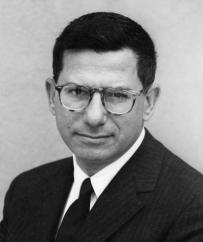In this article, Councilman Marvin Braude reflects how a recent adopted on a revised Air Quality Management Plan will impact Los Angeles. The plan is expected to bring in changes to jobs/housing balance and mass transit. Braude also points to a serious issue that can deter the plan for clean air: intense urban sprawl.

"From a planning perspective, the big culprit in the battle for clean air is urban sprawl, which gave us freeways, single family neighborhoods stretching in all directions, low-rise buildings and hour-long commutes."—Marvin Braude
A nearly unanimous vote last March 17 on a far-reaching plan to improve Southern California’s air quality may put a new face on land-use planning in the Los Angeles basin.
When the South Coast Air Quality Management District voted 10-2 to adopt a revised Air Quality Management Plan to help the region meet its federally mandated airquality goals, it called into question the future of many of the yardsticks and assumptions by which planners have long plied their trade.
With the keynote of the plan being a better jobs/housing balance, the region's underlying preference for living in one neighborhood and working in another, far distant, is threatened. The day of the bedroom community may be nearing its end.
The plan also proposes other significant societal changes such as the encouragement of better mass transit, the broader use of alternate fuels and the rearrangement of work schedules. For land use planners, though, the plan’s implications have yet to be defined in detail.
From a planning perspective, the big culprit in the battle for clean air is urban sprawl, which gave us freeways, singlefamily neighborhoods stretching in all directions, low-rise buildings and hour-long commutes.
In a region where sprawl already exists, options available to combat it are limited to what can be done to already-developed communities. For the most part, planners need not be concerned with changes in what is permitted on vacant land; such changes will pose few problems to planners because their canvas is blank. The real questions is how they will approach reducing traffic by land-use strategies in an already built-up city.
For most of us, our longest and most frustrating drives are to work. We have accepted the grind of commuting as the price for suburban living at lower densities. To reduce commuting, then, and to lessen the amount of pollution produced by fuel that's inefficiently burned in rush-hour traffic, home-to-work drives have to be shortened. That’s why a better jobs/housing balance is high on the AQMD’s policy agenda.
Under the plan, just as new business and industry will be lured to residential areas like Riverside and San Bernardino Counties, so will new tracts of homes at varying densities be encouraged in previously industrial zones.
Similarly, the plan will eventually require new businesses in job-rich areas (commercial or industrial zones) to open satellite work centers in predominantly residential parts of cities.
In the latter neighborhoods, changes in city laws may also be needed so that employees can work at home, via teleconferencing. On the other end of the teleconference wire, work sites in new large (25,000 square feet or more) businesses-work sites made possible by additional code revisions-will receive from and transmit information to, these home-quartered employees.
As much as any other single item, traditional, on-site parking lots may become endangered species as the AQMP unfolds. Throughout the plan, references are made to reducing the amount of parking required for future commercial developments, to charge for parking and to encourage more workers to use mandatory ride-sharing incentives. With less land required for parking, planners can be more creative and imaginative in designing new structures. Higher density, with more jobs per site, can result; however, lower density, with more attractive design features and lower construction costs, could also be a consequence.
Cities in Southern California may be forced by air pollution-induced restraints to become far more decentralized in the next two decades, and more like the small towns many of us knew in our youth. Neighborhood shopping rather than large malls, families with one or no cars and more greenery and less asphalt may all result from the AQMP's application to our lives.
Each of these will mean major changes, both in the laws that govern land use and in the way we carry out our lives. Planners will have a large role to play in both, and with skill and imagination can make our transition to a simpler, cleaner society less painful.
- Log in to post comments



